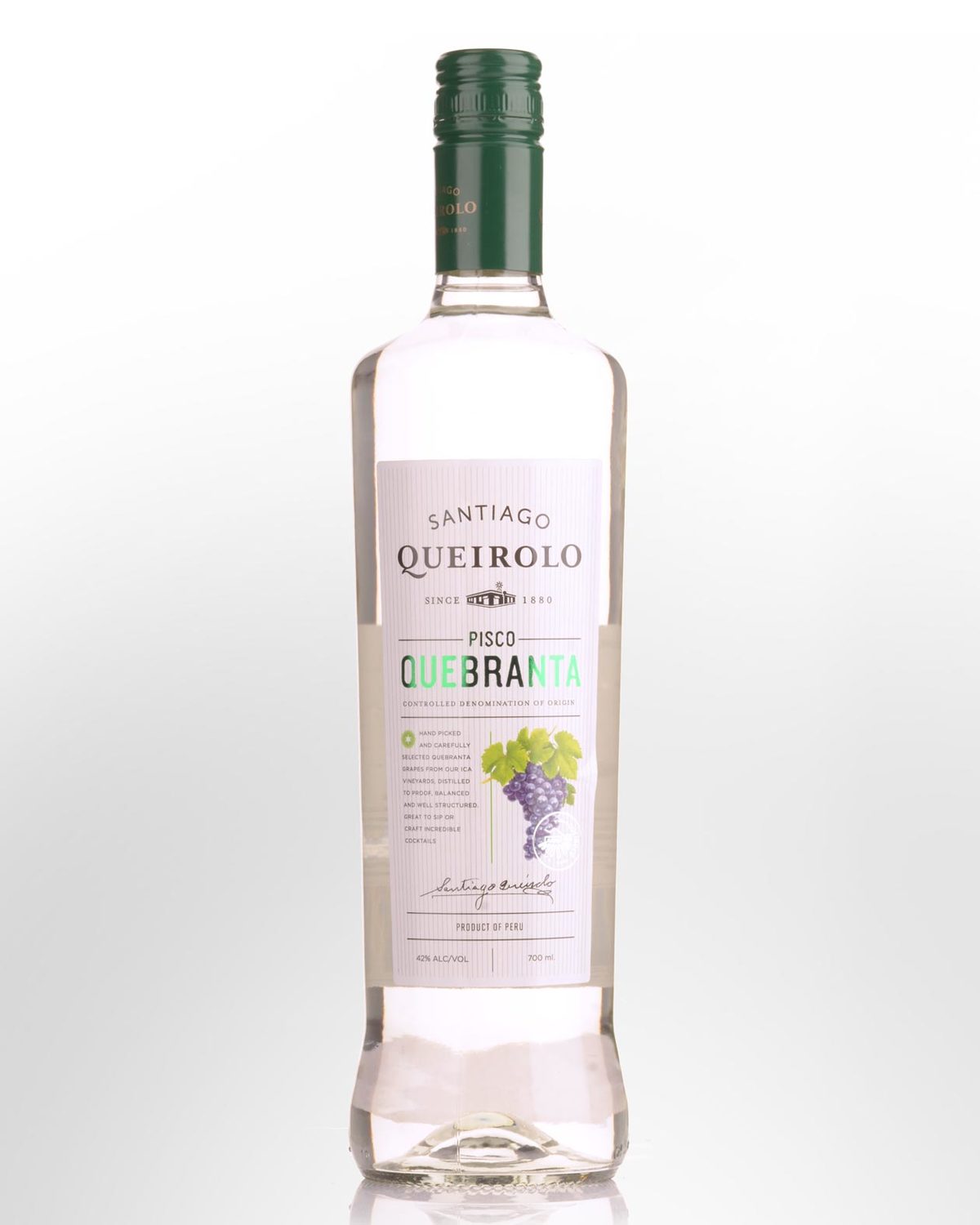
- 88
Santiago Queirolo Pure (Pura) Quebranta Grape Pisco (700ml)
A spirit fermented and distilled from grapes, Pisco was initially developed by Spanish settlers in Peru around the sixteenth century as a cheaper alternative to their imported national spirit, ‘Orujo’ (a transparent spirit obtained from the distillation of the pomace of the grape, usually bottled at roughly 50% alc/vol). Pisco is produced in the wine making regions of both Chile and Peru; however, questions persist as to their points of difference. Generally speaking, Peruvian Pisco is considered to be superior. Its focus is on utilizing traditional methods to produce an artisanal product which pre-dates Pisco produced in Chile. Chilean Pisco, on the other hand, is the big corporate brother of the Peruvian, with an industry geared for high end production and export. In summary, although both styles are essentially forms of grape spirit, the end product is markedly different.
Defining Peruvian Pisco are particular methods of production, provenance, establishment of vines, the use of specific varietals and storage techniques. In all, it involves a series of considerations more comparable to the production of a fine wine. The Ica Valley is one of Peru’s best Pisco producing regions. The desert conditions are ideal for varietals such as Quebranta, Common Black, Mollar, Italia, Muscat, Albilla and Torontel to thrive. Famous distilleries located in the Ica Valley include Tacama, and the featured Quierolo brand.
There are four traditional styles of Pisco produced:
1. Pura (Pure): Made from using only a single grape variety, these usually include non-aromatic varieties such as Quebranta or Common Black. Famous for producing the ideal Pisco Sour.
2. Aromatic: Made from Moscatel varietals, these include Muscat, Torontel and Italia.
3. Mosto Verde (Green Must): Distilled from partially fermented must, this must be distilled before the fermentation process has completely transformed the sugars into alcohol.
4. Acholado: Blended from the must of several grape varietals.
Prior to distillation, the wine is placed into large containers known as ‘botijas’, (also known as pisqueras). These are made of clay, sand, manure and water, lined with a fibrous material such as straw to shape. These containers are placed outside whereby the heat of the sun acts as catalyst for fermentation. Oppose this to the Chilean styles which are matured in oak, producing a toastier spirit which is bottled at varying strengths according to the style. Peruvian Pisco must be bottled at the natural strength off the still.
Tasting note: Clear, brilliant, slightly viscous appearance. Strong yeast, fruit bread and caper-like aromas. Entry is smooth, warming and mildly tingly with olive bread and fruity flavours (plum, grape) laced with white pepper. Good concentration and balance. Slightly waxy, oily texture. Finishes clean and dry with a delicate salty, green olive and spice aftertaste. 42% Alc./Vol.
Cocktail Recipe: The Classic Pisco Sour
-3 parts Pura Pisco
-1 part granulated sugar
-1 part lime juice
-1 part egg white
Shake vigorously with ice until frothy and strain into a small wine glass and Garnish with ground cinnamon.
to most of Australia
